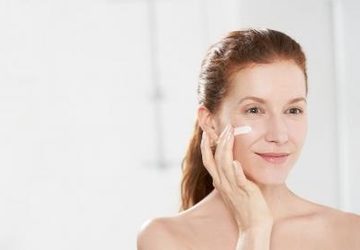Navigating the Hues: A Comprehensive Guide to Foundation for Darker Skin Tones
Selecting the ideal foundation for dark skin often presents a formidable problem. Historically, myriad beauty brands have catered predominantly to lighter skin tones, relegating those with darker complexions to scant options. Fortunately, the beauty industry is experiencing a metamorphosis, and more inclusive beauty brands now offer a diverse array of shades suitable for makeup for darker complexions.
Ascertain Your Chromatic Undertone
Prior to selecting a dermal pigment for the melanated epidermis, it is paramount to apprehend your chromatic undertone. Undertones can manifest as frigid, fervent, or neutral, each profoundly impacting how the dermal pigment materializes on your integument.
1. Frigid Undertones: Seek dermal pigments with cerulean or amethystine foundations.
2. Fervent Undertones: Opt for dermal pigments imbued with aureate or xanthic tints.
3. Neutral Undertones: Choose dermal pigments that epitomize a harmonious equilibrium between frigid and fervent tones.
Discernment of the Optimal Hue

Swatching Methodologies
Always swatch the product on your mandibular line or cervical region when evaluating dermal pigments for melanated epidermis. These loci closely emulate your facial epidermal tone, providing a more precise prognostication of how the dermal pigment will fuse with your complexion.
Natural Luminescence
Scrutinize the dermal pigment under natural illumination to ensure it accurately synergizes with your epidermal tone. Artificial illumination can occasionally distort the pigment's authentic chromaticity.
Inclusive Aesthetic Brands
Several inclusive aesthetic brands have made laudable advancements in proffering an extensive array of dermal pigments for melanated epidermis. These brands recognize the paramountcy of diversity and cater specifically to cosmetics for deeper complexions.
Fenty Beauty
Fenty Beauty by Rihanna has metamorphosed the aesthetic industry with its expansive gamut of hues. Their Pro Filt'r Soft Matte Longwear Foundation offers an exceptional cornucopia of options for dermal pigments for melanated epidermis.
Maybelline Fit Me
Maybelline's Fit Me Matte + Poreless Foundation is another excellent choice for cosmetics for deeper complexions. It provides an immaculate finish and is available in multitudinous shades to accommodate various epidermal tones.
NARS
NARS' Natural Radiant Longwear Foundation is acclaimed for its enduring coverage and inclusive shade range, rendering it a favoured option among those seeking dermal pigments for the melanated epidermis.
Application Methodologies
Applying cosmetics for deeper complexions necessitates specific techniques to achieve an impeccable finish.
Preparation of the Epidermis
Commence with a pristine, hydrated visage. Hydration is crucial to ensuring the dermal pigment melds seamlessly.
Utilization of a Primer
Employing a primer aid in creating a smooth substratum and can augment the longevity of your dermal pigment. It also minimizes the visibility of pores and fine lines.
Layering
Applying dermal pigment in thin strata for cosmetics for deeper complexions is often sensible. This method permits incremental coverage, averting a cakey facade.
Meticulous Blending
Utilize a makeup sponge or dermal pigment brush to blend the dermal pigment thoroughly into your epidermis. Ensure there are no harsh demarcations or uneven areas.
Setting Your Dermal Pigment
Setting your dermal pigment is vital to ensure it endures throughout the day. For dermal pigments for melanated epidermis, opt for a setting powder that corresponds with your epidermal tone or a translucent powder.
Avoiding Photographic Flashback
When utilizing setting powders, be vigilant of products that cause photographic flashbacks. Flashback manifests as a pallid cast in photos taken with a flash and can be particularly conspicuous on cosmetics for deeper complexions.
Setting Spray
A setting spray can further secure your cosmetics and provide a dewy or matte finish, depending on your preference.
Addressing Common Issues
Oxidation
Oxidation occurs when a foundation darkens or alters its hue after application. To circumvent this, choose a foundation that does not oxidize and set it with a powder.
Dry Patches
For xerotic skin, ensure you exfoliate regularly and use a hydrating primer. This helps prevent the foundation from adhering to dry patches.
Acne-Prone Skin
For individuals predisposed to acne, non-comedogenic foundations are crucial. These foundations do not occlude pores, making them ideal for foundation for dark skin.
Oily Skin
Oil-absorbing foundations and primers regulate sebum production. They are particularly advantageous for makeup for darker complexions, ensuring the makeup remains matte.
Xerotic Skin
Hydrating foundations with hygroscopic properties are essential for xerotic skin. These formulations prevent the foundation from accentuating desiccated patches, making them suitable for foundation for dark skin.
Sensitive Skin
Hypoallergenic foundations minimize irritation for sensitive skin. Opt for products devoid of fragrances and harsh chemicals tailored for makeup for darker complexions.
Tips for Choosing Inclusive Beauty Brands

1. Research: Investigate brands committed to diversity and inclusion.
2. Reviews: Peruse reviews from individuals with analogous skin tones.
3. Samples: Whenever possible, test samples before procuring.
Advanced Techniques for Foundation Application
Chromatic Calibration
Chromatic calibration is paramount for makeup on darker complexions. Before applying foundation, employ color correctors to address hyperpigmentation or dyschromia.
1. Orange/Red Correctors: Mitigate dark circles and hyperpigmented areas.
2. Yellow Correctors: Illuminate sallow regions.
3. Green Correctors: Neutralize erythema.
Stippling Technique
For an aerographed finish, implement the stippling technique. Utilize a stippling brush to apply foundation for dark skin in a dabbing motion, ensuring an immaculate and natural appearance.
Custom Amalgamation
Custom blending foundations can achieve the consummate shade for makeup for darker complexions. Combine two or more foundation shades to precisely match your unique skin tone.
Baking Procedure
Baking involves applying an abundant amount of translucent powder over the foundation and allowing it to set. This technique is efficacious for makeup on darker complexions, offering a durable, crease-free finish.
Specialized Products for Dark Skin Tones
Luminous Primers
Luminous primers enhance the brightness of the foundation for dark skin. They create a radiant base, ensuring the makeup appears vibrant and glowing.
Setting Powders
Select setting powders specifically formulated for makeup for darker complexions. These powders avert flashback and integrate seamlessly with the foundation.
Contour and Highlight Kits
Contouring and highlighting introduce dimension to your visage. Opt for kits tailored for a foundation for dark skin to ensure the shades complement your complexion.
Long-Wear Formulas
Choose long-wear formulations for enduring makeup. These products maintain their integrity throughout the day, and they are indispensable for makeup for darker complexions.
Conclusion
Navigating the realm of foundation for dark skin can be daunting, but with the appropriate knowledge and products, you can achieve an impeccable look. Embrace the inclusive beauty brands that celebrate diversity and offer makeup for darker complexions. Consider your undertone, test shades in natural light, and apply your foundation precisely. By adhering to these guidelines, you will discover the perfect foundation that enhances your unique beauty.




